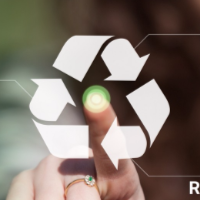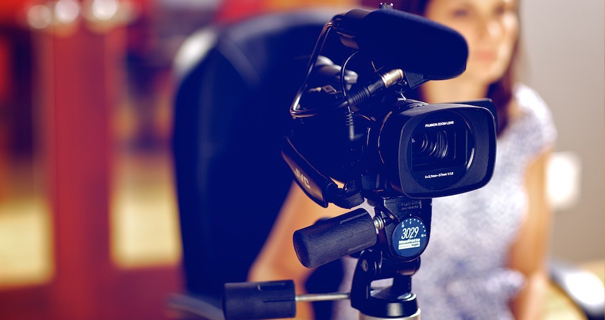How Legal Videography Can Improve Your Courtroom Efficiency
Why Legal Videography Is Essential for Accurate Court Recordings
The role of legal videography in court room settings can not be overstated, as it offers as an important tool for maintaining the integrity of court documents. The ramifications of integrating legal videography into typical court techniques raise essential concerns about its broader effect on the lawful system.
Relevance of Visual Evidence
In the realm of legal procedures, the value of aesthetic evidence can not be overemphasized. Aesthetic evidence works as a powerful device in developing realities, corroborating testimonies, and boosting the overall clarity of a case. This type of evidence, that includes photos, video clips, and layouts, can give a tangible context that spoken summaries commonly lack, thereby offering courts and judges a clearer understanding of the scenarios bordering a case.
Additionally, aesthetic evidence aids in the retention of information. Human cognition is inherently visual, and people are much more likely to remember and comprehend info provided in a visual layout. In the court room, this can be important, as engaging visual evidence can sway opinions and strengthen the narrative presented by legal representatives.
Additionally, making use of visual evidence can decrease misconceptions and obscurities that commonly develop from spoken exchanges. By supplying a direct representation of events, visual evidence assists to remove subjective analyses and promotes an extra objective examination of the realities. The assimilation of visual proof into lawful proceedings not just enhances the integrity of the judicial process yet likewise enhances the chance of achieving a simply end result.
Capturing Non-Verbal Signs
Using innovative videography methods can significantly boost the capture of non-verbal hints throughout lawful process. Non-verbal interaction, including face expressions, body language, and eye get in touch with, plays a crucial role in communicating emotions and intents that may not be clearly specified in spoken statement. legal videography. Lawful videography employs high-def cameras and critical angles to ensure that these subtle cues are taped with quality and precision
The ability to assess non-verbal habits can give useful context to declarations made throughout court sessions. A witness's hesitation or self-confidence can be interpreted with their position or gestures, potentially affecting the jury's perception of credibility. The use of close-up shots can aid concentrate on a speaker's expressions, enabling for a much more nuanced understanding of the statement.
Furthermore, integrating multiple electronic camera angles can create a thorough view of interactions, highlighting characteristics in between parties included. This complex strategy not just boosts the precision of the court record yet also aids in maintaining the honesty of the judicial procedure - legal videography. Eventually, capturing non-verbal cues through legal videography cultivates a richer, extra complete representation of court room process

Enhancing Testament Dependability
The integrity of testament can be dramatically reinforced with making use of high-grade legal videography. Video clip recordings work as an objective medium that records not only the spoken words of witnesses but additionally the nuances of their delivery, go to the website including tone, pacing, and emotional expressiveness. This multifaceted documents offers a more clear understanding of the witness's trustworthiness and purposes, which can be crucial in lawful process.
Furthermore, lawful videography reduces the potential for misinterpretations that might arise from written transcripts alone. When jurors can observe a witness's temperament and body movement in conjunction with their testament, they are much better geared visit up to assess the authenticity and dependability of the proof provided. This aesthetic context can strengthen the testimonial narrative, making it more compelling and reliable.
In addition, the visibility of a video recording can deter possible incongruities in statement. Witnesses may be extra careful in their statements when they understand they are being tape-recorded, resulting in even more accurate and genuine accounts. Overall, high-quality lawful videography enhances the stability of testament, guaranteeing that the court has accessibility to a total and genuine representation of the realities as communicated by the witnesses.
Supporting Appeals and Reviews
Lawful videography plays a crucial role in supporting allures and testimonials by providing an extensive visual record of court proceedings. This aesthetic documents records not just the talked words of witnesses and lawyers however likewise the nuances of body language, intonation, and court characteristics. Such components can be pivotal in understanding the context of testimonies and arguments presented.
In the appellate process, where the focus is on mistakes of regulation and step-by-step fairness, a video clip document can serve as a vital tool for appellate courts. It enables courts to examine the initial test context, making certain that decisions are based upon a total understanding of the proceedings. The ability to visually evaluate the temperament of witnesses or the interactions between celebrations can expose insights that written records might neglect.

In addition, legal videography can assist in making clear ambiguities in testaments or procedural judgments, thereby enhancing the basis for an allure. By using a trusted, unbiased account of what taken place in court, lawful videography not just supports the honesty of the legal process yet also empowers all events involved to make enlightened choices concerning their situations.
Enhancing Court Room Processes
Enhancing courtroom performance, legal videography simplifies procedures by giving prompt access to aesthetic records of process. This modern technology enables judges, attorneys, and juries to revisit crucial statement and proof, guaranteeing that all celebrations have a clear understanding of the instance. By recording the nuances of verbal and non-verbal interaction, videography enriches the document, making it much easier to realize the context and weight of statements.

Additionally, video clip recordings can facilitate remote engagement in hearings, permitting greater versatility in organizing and engagement, which is specifically beneficial in intricate situations involving multiple stakeholders.
Conclusion
In final thought, legal videography plays a crucial role in making certain exact court recordings by supplying necessary visual proof that captures both spoken and non-verbal communication. This technique boosts the dependability of statements, sustains appellate evaluations, and streamlines court procedures. By promoting an extensive understanding of court room characteristics, legal videography inevitably contributes to a lot more fair judicial outcomes, enhancing the stability of the lawful system and facilitating informed decision-making.